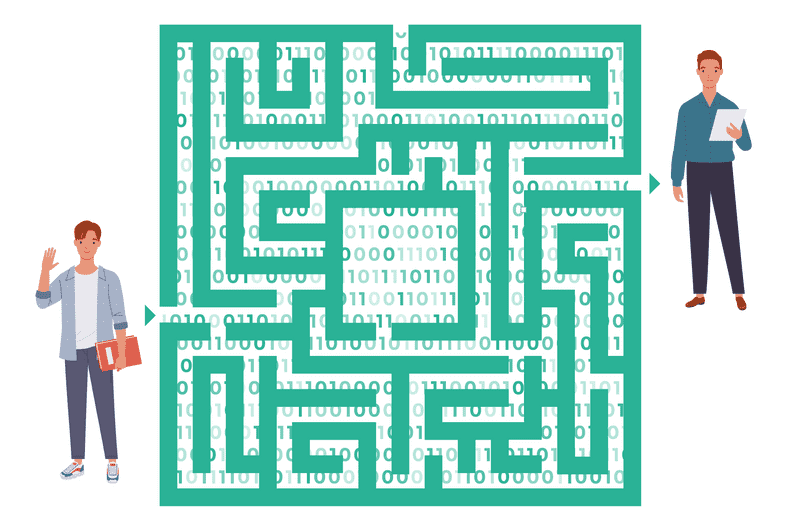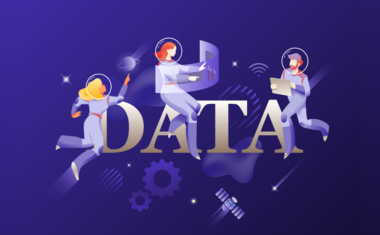Released in 1991 by Dutch programmer Guido van Rossum, Python is a general-purpose programming language skyrocketing in popularity among data scientists. The Python language contains over 137,000 libraries, or pieces of reusable code, that simplify operations and experimentation. Its hallmark qualities are the simplicity and readability of the code and the wide array of tools available for big data processing and large-scale code.
Interested in learning Python? You’ve come to the right place! This comprehensive tutorial will get you up to speed quickly with the basics of Python.
Why learn Python?
One of the first technical languages taught in university settings, Python is relatively straightforward to learn and mirrors the human language in structure.
- It has a speedy processing time, with fast edit-test-debug cycles.
- Python boasts a large, active community that can help with queries and algorithm creation. Stack Overflow and Codementor are excellent starting points for finding others passionate about Python.
- Python is free of cost and integrates with many open-source web frameworks, like Django, Pyramid, Flash, Cherrypy, and Bottle, and GUI programming frameworks, like PyGUI, PyQT, PyJs, and WxPython.
Can you learn Python on your own?
You can definitely learn Python programs on your own, and you don’t need prior experience or a degree to get started. Springboard offers a free Intro to Python for Data Science course and you can also explore other Python tutorials, lessons, and resources.
Here are some tips for learning the Python programming language:
- Code every day and take detailed notes, meet others who are learning the language so you can pair program with practice problems (Meetups and PythonistaCafe are great for networking)
- Build something from scratch or contribute to an open-source piece of code
- Not only will this reinforce new pieces of knowledge, but you can prepare for data science job applications by adding to Github or designing your own project portfolio
Related Read: 18 Best Python Courses to Sharpen Your Skills
Is Python a dying language?
Definitely not! Almost 45% of data scientists use Python as their preferred language, making it the most popular language today. It is the language of choice of Google, NASA, and CERN, among other large corporations. Facebook moved to Python and the pandas library because it was the same language used by the engineering team and easier to keep everything in a similar codebase.
Get To Know Other Data Science Students
Haotian Wu
Data Scientist at RepTrak
Aaron Pujanandez
Dir. Of Data Science And Analytics at Deep Labs
Jonas Cuadrado
Senior Data Scientist at Feedzai
How is Python used in data science?
Python supports back-end application and web development and complex mathematical computations. On the data science side, Python helps with data scraping and processing at scale, data visualization through packages like Matplotlib, and machine learning and deep learning.
Today, Python serves many purposes across diverse industries. It has predicted terminal illness progression for major medical centers, identified cross-sell opportunities for multinational financial services firms based on behavioral data, and enabled the aerospace industry to meet software system deadlines through time-efficient data mining.
Python also comes with machine learning specific libraries, like TensorFlow and scikit-learn, for those interested in exploring advanced topics around unstructured data and artificial intelligence.
Is Python easier than R?
Since Python is an object-oriented programming language, it can be easier to learn if you are familiar with a similar language like C++ or Java.
Python uses English keywords and user-friendly data structures, making it more readable and intuitive than R. For beginners, there are also easy-to-follow style guidelines, like PEP 8, and extensive support libraries.
Python for beginners: how to learn Python in 6 steps
Here are some tips for becoming a Python pro in no time:
- Download CRAN. In order to run Python, you first have to download the software package from CRAN (the Comprehensive R Archive Network), which operates on Mac, Windows, and Linux platforms. Many data scientists appreciate the Jupyter notebook, an interactive data science environment (IDE), which is an open-source tool that allows you to create and share documents of code and equations. Use conda or pip for fast installation.
- Learn Python concepts and syntax. To begin coding in Python, you’ll need to adopt a brand new vocabulary, including Python strings, tuples, conditional statements, parameters, variables, data types, operations, decorators, functions, conditionals, and loops.
- Master the fundamentals of object-oriented programming. After you understand the basics, you can move on to object-oriented programming. Each object has a class of available states and actions. As part of OOP, you will learn to create objects and classes and become acquainted with terms like inheritance, encapsulation, and polymorphism.
- Learn parallel programming. Sometimes you will need to simultaneously operate tasks in different processors within the same computer. This is called concurrent or parallel programming. Familiarize yourself with concepts such as mutual exclusion, locks, deadlocks, and race conditions.
- Expand your toolkit of Python libraries and frameworks. As a data scientist, you may need to learn libraries and frameworks specific to data aggregation and mathematical calculations. Some of the most popular Python libraries consist of Pandas, Numpy, SciPy, Matplotlib, Scikit Learn, TensorFlow, and Kera, which help with data manipulation and scientific computations. Web frameworks, like Django and Flask, are packages or modules that facilitate the creation of web applications.
- Practice, practice, practice. Learning any language well requires practice in addition to booksmarts. Try entering Kaggle competitions and taking on freelance projects to apply insights from Python modules.
With Python as part of your toolkit, you’ll be ready to attack almost any data science problem that comes your way with intellectual rigor and analytical depth.
Since you’re here…Are you interested in this career track? Investigate with our free guide to what a data professional actually does. When you’re ready to build a CV that will make hiring managers melt, join our Data Science Bootcamp which will help you land a job or your tuition back!






